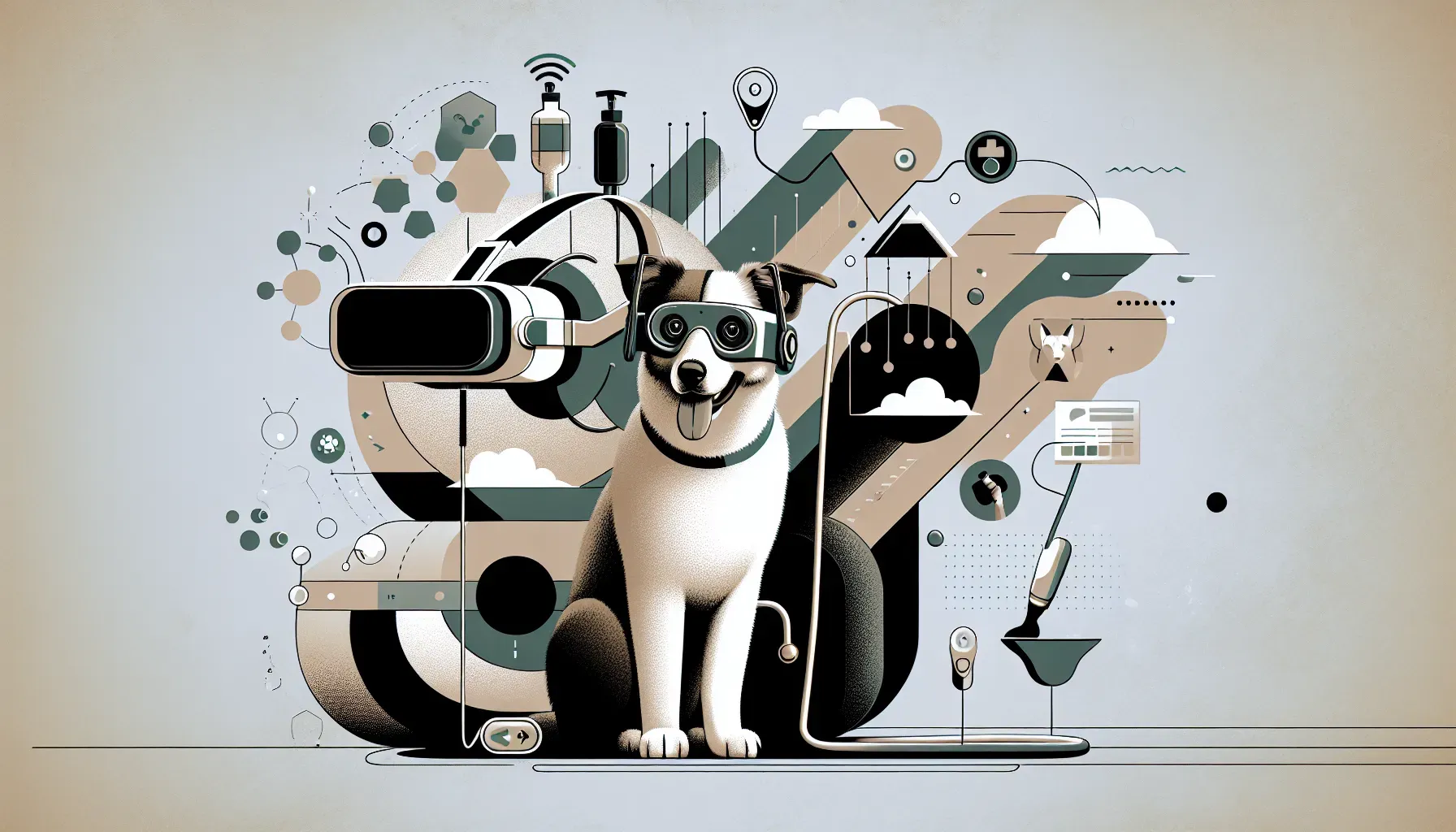Revolutionizing Rehab: The Emergence of Virtual Reality in Pet Therapy

Revolutionizing Rehab: The Emergence of Virtual Reality in Pet Therapy
In recent years, the pet care landscape has witnessed a groundbreaking evolution with the integration of virtual reality (VR) technology into pet therapy. This innovative approach holds immense promise for enhancing the rehabilitation outcomes of our beloved animal companions. As we delve into the frontier of virtual reality's role in pet therapy, we uncover a realm of possibilities that could redefine how we address mobility issues and alleviate stress and anxiety in pets.
Exploring the Frontier: Virtual Reality's promising role in improving pet rehabilitation outcomes
Virtual reality has emerged as a game-changer in the realm of pet rehabilitation. By creating immersive, simulated environments, VR technology has the potential to engage pets in therapeutic activities that aid in their physical and emotional recovery. The ability to transport pets into virtual worlds opens new doors for addressing mobility limitations and boosting their overall well-being.
A Leap Forward: How VR technologies are reshaping physical therapy for pets with mobility issues
Pets facing mobility challenges often encounter limitations in traditional physical therapy settings. However, VR technologies offer a revolutionary solution by simulating movements and exercises tailored to each pet's specific needs. Through interactive experiences, pets can engage in targeted activities that promote muscle strength, coordination, and flexibility, effectively redefining the landscape of physical therapy for animals.
Real Healing in Virtual Worlds: Case studies showcasing successful VR rehabilitation programs for animals
Real-world case studies stand as testaments to the tangible benefits of VR-based rehabilitation programs for animals. Tails' Talks unveils inspiring stories of pets who have experienced remarkable progress through VR therapy, demonstrating significant improvements in their mobility and emotional well-being. These success stories underscore the transformative potential of virtual reality in pet care and rehabilitation.
Bridging the Gap: The synergy between veterinary professionals and tech innovators driving VR therapy adoption
The integration of VR technology into pet therapy necessitates a collaborative effort between veterinary professionals and tech innovators. Tails' Talks recognizes the pivotal role played by forward-thinking veterinarians and VR experts who work hand in hand to develop tailored VR experiences that cater to the unique rehabilitation needs of individual pets. This collaborative synergy forms the cornerstone of driving widespread adoption of VR therapy in the pet care domain.
The Comfort Zone: Reducing stress and anxiety in pets through immersive VR environments
Beyond physical rehabilitation, virtual reality holds immense potential in addressing the emotional well-being of pets. By immersing them in calming, visually engaging virtual environments, VR therapy can alleviate stress and anxiety, fostering a sense of tranquility and comfort for pets undergoing rehabilitation. Tails' Talks emphasizes the significance of nurturing emotional wellness alongside physical recovery, highlighting VR's role in creating soothing experiences for our furry friends.
Tailored VR Sessions: Customizing virtual experiences to meet individual rehab needs of pets
One of the key strengths of VR therapy lies in its ability to be tailored to meet the specific rehabilitation requirements of each pet. Whether it's designing interactive exercises or providing sensory stimulation, VR sessions can be customized to cater to diverse conditions and unique mobility challenges faced by individual animals. Tails' Talks underscores the importance of personalized VR experiences in optimizing the effectiveness of pet rehabilitation programs.
Navigating the Challenges: Addressing the practicalities and limitations of integrating VR in pet care
While the potential of VR therapy for pets is vast, it is crucial to acknowledge and address the practical challenges associated with its integration into pet care practices. From accessibility and equipment requirements to ensuring seamless integration within existing rehabilitation protocols, Tails' Talks sheds light on navigating these challenges while maintaining a focus on delivering tangible benefits for pets undergoing VR-based therapy.
Future Pawsibilities: Predicting the next steps in VR technology for pet wellness and beyond
Looking ahead, Tails' Talks anticipates an exciting trajectory for VR technology within the realm of pet wellness. As advancements continue to unfold, we foresee enhanced immersive experiences, refined therapeutic applications, and expanded accessibility to VR-based rehabilitation programs for pets. The future holds boundless pawsibilities as virtual reality paves new paths toward comprehensive pet care and well-being.
In conclusion
Virtual reality has emerged as a transformative force in revolutionizing pet rehabilitation, offering a holistic approach to addressing both physical and emotional aspects of pet wellness. As Tails' Talks delves into this frontier at the intersection of technology and animal care, it celebrates the remarkable strides taken towards leveraging VR technology for the betterment of our cherished furry companions.




